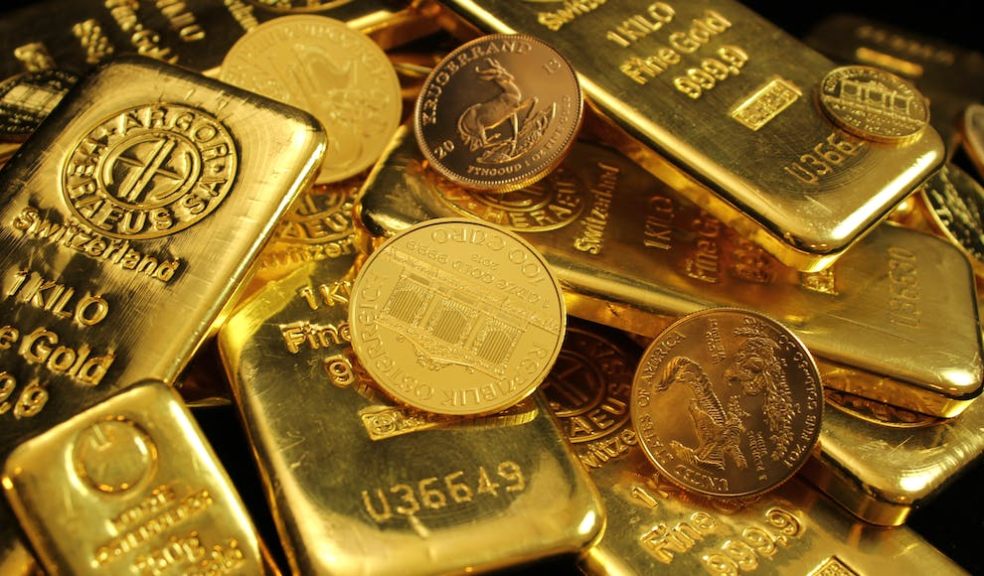
Will Bringing the Gold Standard Back Solve Out-of-Control Inflation Rates?
Prices of goods and services continue to rise, making it difficult for many around the world to fit what they need into their monthly budget. According to CPI Inflation Calculator, prices increased by 18.11% in just three years. What was bought for $50 in 2020, costs nearly $60 today. This inevitably creates unexpected and major changes in people’s lives.
“We revisit our budgets, cut our discretionary spending, and make personal sacrifices to make sure we can afford what we need. These small changes amount to big decisions, like renting instead of buying a house, choosing one job over the other, or moving cities for better opportunities. Suddenly, your life looks dramatically different,” Callie Cox, an American investment analyst, said in an interview with Business Insider.
According to the United States Bureau of Labor Statistics, grocery prices have increased 805% since 1967. This is due to high global inflation rate, which refers to a rise in prices of goods and services over a period of time. According to the International Monetary Fund, “global headline inflation seems to have peaked” and that “inflation remains well above central banks’ targets,” especially when it comes to advanced economies.
Although inflation is mainly caused by an imbalance in the supply and demand of goods and services, it also applies to the supply and demand of money. And this time, experts say that it is largely due to an increase in the money supply and how the current monetary system works in general. These two factors need to be explored in order to find a solution to inflation.
The Gold Standard vs. The Fiat System
Under the gold standard, countries’ currency was directly linked to a certain amount of gold. Other countries that did not use it then based the value of their currency to the currency of a country that was based on gold. For instance, a U.S. dollar is equivalent to one gram of gold. And countries can only mint coins and print paper currency based on their gold reserves.
This essentially means that if the United States only has 1kg of gold, then it can only create new coins and bills worth $1,000. The limited supply of money largely controlled inflation, because the money supply should keep the pace of the production of goods and service. Inflation is the result when the money supply outpaces country’s production rate.
And this is why, according to an article on the gold standard published on Econlib, inflation was minimized to an average of only 0.1% per year during the gold standard years. After the gold standard was abolished, in the period of 1946 to 2003, inflation ballooned to an average of $4.1%.
The gold standard was replaced in 1944 with the Bretton Woods System, which was used to help the world recover from World War II. It pegged the value of international currencies to the U.S. dollar, since it is the most used currency in the world. The U.S. dollar’s value was then linked to gold at $35 per ounce.
According to the World Gold Council, during this era, the global economy grew and recessions were limited and minor. However, global inflation lowered the price of gold, and trade deficits depleted American gold reserves. “Finally in August 1971, President Nixon announced that the U.S. would end on-demand convertibility of the dollar into gold for the central banks of other nations. The Bretton Woods system collapsed and gold traded freely on the world’s markets.”
After the U.S. completely abandoned the gold standard, the current fist system was created, where all other currencies are pegged to the dollar, making it the principal global reserve. What this basically means is that the U.S. can print money however much they want because it is not tied to the value of gold or anything else. This is the main difference between the gold standard and the fiat system. The U.S. dollar is now essentially creating money out of nothing.
Money vs. Currency
There is a need to define money and currency because it is now being used interchangeably, when there is a major difference between the two. It is best defined by Zeming M. Gao, a patent attorney, Company-as-a-Product (CaaP) builder, business strategist, and tech entrepreneur.
“Money is an agreement of value, while currency is technology that transmits money. The requisite quality of money is value, while the requisite of currency is efficiency. It used to be that gold (its substance) was money, and standardized gold coins were a currency,” Gao wrote on his blog post about tokenized gold.
With this distinction, it can clearly be seen that the fiat system is not circulating real money as it has no actual value—it is not pegged to gold or any other physical asset. While modern-day money is just a mere currency, a technology used to make the use of money more efficient. But then again, is it acting as a proper currency, when it's circulating something backed by no tangible value?
“But after the gold standard was abandoned, the dollar became both money and currency. It was a double tragedy. Not only is the value agreement (the substance of money) imposed by the government rather than determined by a free market, but also the distinction between money and currency is destroyed to further invite abuse,” Gao explained.
Some countries, including the U.S. print more money in order to fund public spending. This is what causes them to live well beyond their means and, ultimately, cause inflation. For instance, Zimbabwe continued printing its currency and increased its denomination (the highest being one trillion) in order to try to address its high inflation rates, which eventually peaked in 2008 to a daily inflation rate of 98%.
Although what happened to Zimbabwe, which came to the point that it completely stopped printing its own currency, is an extreme one, it is a clear example of the abuse that Gao mentioned. The U.S. is also guilty of this. During the pandemic, the U.S. printed $3 trillion in just three months (March to June in 2020) to address COVID-19 and give aid to its citizens. Without the U.S. dollar’s role as a global currency, then it would have faced the same fate as Zimbabwe.
Tokenized Gold vs. Fiat Currency
Fiat currency simply pertains to coins and paper bills issued by governments. It is not backed by anything valuable, like gold or silver, but only by the government that issued them.But in order to properly compare tokenized gold and fiat currency, it is important to first ask, “What is tokenization?”
Tokenization is the process of converting the ownership right to anything of value—whether it be a physical asset or an intellectual property—into a digital token. The non-fungible tokens (NFTs) of artworks and songs that swept the world by storm in 2021 is an example of a tokenized asset.
Tokenized assets live on the blockchain, and because of this, all transactions are recorded and stored in an immutable and chronological manner. A public blockchain will further add transparency to all transactions, where they can easily be verified and authenticated by anyone. This system not only makes the history of transactions virtually fraud-proof, but it also cultivates a relationship of trust between businesses and consumers.
Tokenized gold, then, is a unit of value of gold converted to a token. A very simple example of this would be one gram of gold is equal to one specific token. As in the gold standard, there is actual gold stored in a vault and tokens can only be issued according to the amount of gold reserve.
The difference is that, unlike the previous gold standard, tokenized gold ensures the legitimacy of tokens. There will be no need to verify their authenticity manually, unlike during the gold standard when banknotes needed to be authenticated in order to prevent fraud. It is as easy as using digital fiat currency, only this time, there is real value behind it.
When adopted globally, tokenized gold becomes superior money. It is not only backed by real value with gold, but it functions as a more efficient currency in making it easy to use, authenticate and monitor. Bringing back the gold standard will not solve out-of-control inflation rates, but tokenized gold certainly can.




















